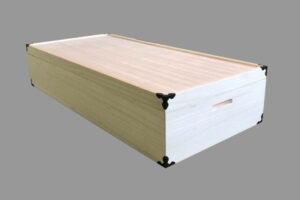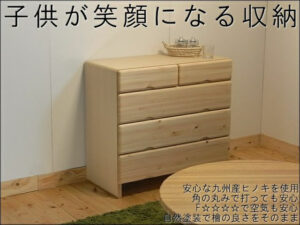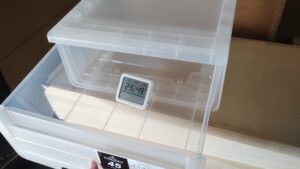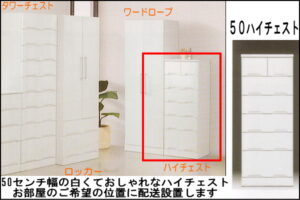
How Paulownia Wood Furniture Protects Your Belongings
Share
📊 Revealed by Real Data: How Paulownia Wood Furniture Protects Your Belongings
At Okawa Furniture, we’re passionate about sharing the unique advantages of traditional Japanese furniture with the world. In our latest study, we conducted a week-long experiment from April 11–17, 2025, using waterproof temperature and humidity sensors to track the climate conditions inside various storage environments.
“Is Paulownia wood really that resistant to humidity?”
“How different is it compared to the outside air?”
→ Now, we have the numbers to show you!
🧪 Test Conditions
We placed temperature and humidity loggers in eight different environments, including wooden chests, plastic bins, and fabric cases:
 Solid Paulownia Closet Chest Solid Paulownia Closet Chest |
 Lid-Type Kimono Storage Case Lid-Type Kimono Storage Case |
 Nagomi Chest (Hinoki Front, No Rails) Nagomi Chest (Hinoki Front, No Rails) |
 Plastic Storage Case Plastic Storage Case |
 Non-Woven Fabric Storage Case Non-Woven Fabric Storage Case |
 Aikuri Chest (with Rails) Aikuri Chest (with Rails)
|
📈 Temperature & Humidity Results


| Storage Type | Avg. Temp (℃ / ℉) | Temp Fluctuation (±℃ / ℉) | Avg. Humidity (%) | Humidity Fluctuation | Stability |
|---|---|---|---|---|---|
| Nagomi Chest | 14.84℃ / 58.7°F | ±2.15℃ / ±3.9°F | 62.42% | 61–65% | ★★★★★ (0.93) |
| Solid Paulownia Chest | 14.61℃ / 58.3°F | ±2.17℃ / ±3.9°F | 61.27% | 59–65% | ★★★★★ (1.38) |
| Kimono Case | 14.74℃ / 58.5°F | ±2.42℃ / ±4.4°F | 59.50% | 56–65% | ★★★★☆ (1.78) |
| Aikuri Chest | 14.86℃ / 58.7°F | ±2.32℃ / ±4.2°F | 62.18% | 59–67% | ★★★★☆ (1.82) |
| Plastic Case | 14.97℃ / 58.9°F | ±2.53℃ / ±4.6°F | 61.99% | 54–71% | ★★★☆☆ (3.95) |
| Fabric Case | 15.08℃ / 59.1°F | ±2.37℃ / ±4.3°F | 58.97% | 50–70% | ★★☆☆☆ (5.79) |
| Warehouse | 15.27℃ / 59.5°F | ±2.56℃ / ±4.6°F | 60.85% | 48–73% | ★★☆☆☆ (6.32) |
| Outside Air | 13.50℃ / 56.3°F | ±4.01℃ / ±7.2°F | 69.37% | 29–100% | ☆☆☆☆☆ (24.9) |
🌡 Temperature: Furniture vs. Outdoor Air
Outdoor air showed extreme fluctuations—up to 8°C in a single day. This can cause serious damage to clothes and paper-based items. In contrast, well-sealed furniture like the Nagomi Chest keeps temperature changes minimal, offering a stable environment.
💧 Humidity: Paulownia Furniture Excels
The Nagomi Chest had the most stable humidity of all: a deviation of just 0.93%. That’s due to the natural moisture-regulating power of Hinoki (cypress) and Paulownia wood.

Surprisingly, it even outperformed the all-Paulownia closet chest—thanks to its precise craftsmanship and airtight structure, a testament to the skills of Japan’s traditional wedding furniture makers.
In Japan, there's a well-known phrase often used to describe high-quality chests:
“When you close one drawer, another pops out.”
While that might seem inconvenient, it's actually a sign of excellent craftsmanship and airtight construction—evidence that the chest is built to seal tightly and protect its contents.

Meanwhile, fabric and plastic cases showed more fluctuation and risk of mold, especially in environments with large temperature swings.

✅ Key Takeaways
- Paulownia & Hinoki furniture offer unmatched stability
- Indoor air is surprisingly unstable—don’t underestimate it!
- Plastic and fabric cases are affordable but need extra care for long-term use
- Drawer seal and rail type significantly affect humidity control
👘 What This Means for You
If you're storing valuable garments like kimonos or seasonal bedding, choosing the right storage makes a difference. This data-backed study proves that Paulownia wood isn’t just a traditional material—it’s smart, effective, and beautiful.
Recommended for:
- Kimono owners
- Families with babies or sensitive clothing
- People moving into new homes
- Anyone storing seasonal items
🧠 Final Thought: Furniture Should Protect, Not Just Store
Furniture is more than design—it's protection. At Okawa Furniture, we combine time-tested materials, traditional craftsmanship, and modern precision to give you storage you can trust.
